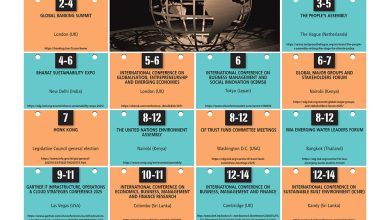SYSTEMIC RACISM
THE BLACK TIPPING POINT
Saro Thiruppathy discusses the impact of past racist and prejudiced policies in the US
George Perry Floyd was an African-American who was born on 14 October 1973. And in spite of some brushes with the law, Floyd’s life was rather uneventful in comparison with his death and the social explosion it triggered across the US. His brutal murder on 25 May by white policemen was the tipping point for Black America.
As African-Americans took to the streets under the Black Lives Matter (BLM) banner to protest against police brutality, racial profiling and criminalising young black men, the world also took note of the systemic racism that still exists in the US.
On 13 March, African-American emergency medical technician Breonna Taylor was killed during a shootout that occurred when three plain clothes policemen erroneously broke into her home, having mistaken the address. Under the authority provided by the ‘no knock warrant,’ police were allowed to use a batter-ing ram to force their way into Taylor’s home. Normally, law enforcement is required to inform occupants of their identity but the no knock warrant exempts them from that obligation.
The Obama administration made body cameras mandatory for police officers. Very often however, there were claims that the equipment malfunctioned particularly during the chase and capture of African-American men. Police excesses against black men by mostly white officers have invariably seen the latter escape with merely a slap on the wrist.
Support from the Democratic Party has given the BLM movement more traction as it raises its collective voice against institutional racism that continues to discriminate against African-Americans despite slavery being abolished in the 19th century.
JIM CROW LAWS In 1863, US President Abraham Lincoln announced the Emancipation Proclamation and in 1865 the 13th Amendment abolished slavery in all its forms.
But the Southern white Democratic states weren’t giving up without a fight, and brought in a series of laws that were designed to discriminate against, disenfranchise and segregate African-Americans from the white community.
These laws (known as Jim Crow laws) were enacted between the late 19th and early 20th centuries, and implemented at state and local levels. They continued to be enforced by white Democratic dominated legislatures until 1965.
Jim Crow laws mandated racial segregation in all public facilities in the former Confederate States, and institutionalised economic, education and social disadvantages for African-Americans who resided there.
In 1896, the US Supreme Court upheld these laws when it declared its ‘Separate but Equal’ legal doctrine.
It declared that the 14th Amendment, which guaranteed equal protection under the law, wasn’t violated as long as the facilities provided to each race were equal.
So state and local governments could require that services, facilities, public accommodation, housing, medical care, education, employment and transportation were segregated by race.
The One Drop Rule, which existed until the 20th century in the US, maintained that any person with even ‘one drop’ of black blood was considered ‘Negro.’ Until 1967, interracial marriage was also considered illegal in America.
‘Redlining’ of neighbourhoods denied black Americans various services by federal and local government agencies, as well as private sector institutions. These denials included access to housing loans, financial services (banking and insurance), healthcare and at times, even supermarkets.
In 1954, the segregation of public schools was declared unconstitutional by US Chief Justice Earl Warren in a landmark case Brown vs Board of Education. It was this ruling that enabled six-year-old Ruby Bridges to be the first African-American child to attend an all white school. Over time, states began repealing their Jim Crow laws and later the Civil Rights Act of 1964 and the Voting Rights Act of 1965 overruled any remaining ones.
According to research, African-Americans and Hispanics are more frequently stopped under the infamous Stop and Frisk Programme in New York City.
Lynching isn’t a criminal offence and recently, NASCAR driver Darrell ‘Bubba’ Wallace was unpleasantly surprised when a noose, which is synonymous with lynching, was found in his garage at Talladega Superspeedway. Wallace is NASCAR’s only full-time black driver in its elite Cup Series.
IMPACT OF RACISM Even though affirmative legislation was enacted more than 50 years ago, the rot is deeply ingrained in the system. The impact of discrimination is evident through the unemployment ratio of whites to blacks, and the underrepresentation of black Americans in corporate and government hierarchies.
Blacks earn 42 percent less than whites and the household wealth of the latter is 17 times higher than that of African-American households; educational opportunities are also weighted towards the whites while black men are more likely to be imprisoned than their white counterparts.
Coauthors of a study by the Federal Reserve Bank of San Francisco state that their research “implies that factors that are harder to measure – such as discrimination, differences in school quality or differences in career opportunities – are likely to be playing a role in the persistence and widening of these gaps over time.”
Racism is real – and affirmative action to mitigate its corrosive presence is the need of the hour.








Very true.